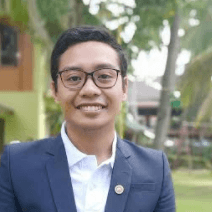SUMMARY
This is AI generated summarization, which may have errors. For context, always refer to the full article.
![[OPINION] Preparing for typhoon season in the middle of a pandemic](https://www.rappler.com/tachyon/r3-assets/612F469A6EA84F6BAE882D2B94A4B421/img/201DB62EE5D541FB9C71BB58D70D03F0/typhoon-covid.jpg)


The discourse and practice related to learning lessons from disasters are complex and complicated. Resilience as a term is argued from different viewpoints, with some questioning it for valid reasons. Romanticizing resilience may result in inaction and stall learning from disruptive events. Equally valid are the arguments that resilience is littered with academic jargon detached from ordinary people’s lives.
Resilience is an evolving concept. In the past, it was conceived as a return to normal after a disaster. This has changed as the “normal” was inadequate in dealing with a shock in the system. As such, resilience now is understood as building back better from pre-crisis conditions. The country’s experience, for example, from Typhoon Ondoy brought not just some soul searching but also a push to finally enact institutional reforms in the country’s disaster governance, particularly by passing the Republic Act 10121, the country’s disaster risk reduction and management (DRRM) law.
However, as the country faces a pandemic in a scale not seen in many people’s lifetime, there is a challenge to not just learn but learn fast. Compared to a typhoon which lasts for a few days, COVID-19 has been around for months. This pandemic has caused loss of lives and livelihoods; physical, emotional, and mental stress; and damage to the economy. All of which hurt the marginalized more. While countries such as the United States and Britain fear a bigger wave of infections this coming winter, the Philippines must prepare for a worst-case scenario of its own – the coming typhoon season.
Dealing with the COVID-19 pandemic during typhoon season
Around 20 typhoons hit the country annually, which often displace millions of people and put a strain on the country’s economy. Typhoon Ambo last May gave a glimpse of what happens when a typhoon and a pandemic hit the country at the same time. The reality that is beginning to unfold is that disasters and pandemic cannot be compartmentalized, as they exist together and often amplify the magnitude and impact of one another.
How can the country pull resources to manage this multi-case scenario? If typhoons as destructive as Yolanda hits the country this year, this would undoubtedly exacerbate financial strain for the public and private sectors. The government has spent half of the P200 billion budget for the emergency subsidy program (ESP). Coupled with this are disbursements made for social health insurances, peace and order initiatives, and other related national efforts to contain the pandemic. The coffers of the LGUs are likewise stretched out to supplement relief efforts. While it is possible that LGUs are on a heightened state of vigilance to anticipate disruptive events, financial resources are already depleting and many frontliners are experiencing burnout. (READ: Rappler Talk: Mahar Lagmay on dealing with typhoons amid COVID-19 pandemic)
Rescue operations and evacuation will also be affected as the highly contagious nature of COVID-19 requires strict physical distancing and hygiene measures. Evacuation centers that are normally packed with people may have difficulty in following the protocols to contain COVID-19. Without adequate planning and implementation, evacuation centers can become hotspots for new infections. The health system already overburdened beyond its capacity in dealing with COVID-19 in the past months can be pushed into breaking point. Thus, there is a need for our policy and health managers to rethink strategies to deal with multi-case scenarios. (READ: Social distancing ‘per family’ at Typhoon Ambo evacuation centers)
Even outside of evacuation centers, people especially daily wage earners who are already struggling with the long periods of lockdown, could find themselves in desperate situations. Many parts of the country’s food supply chain which came to a halt or have been slowed down by COVID-19 are just starting to recuperate with the lifting of the enhanced community quarantine (ECQ). Disruptions from typhoons can put a stop on their operations once again and cause shortage of basic necessities. Without adequate supply of food and other necessities, chaos may ensue in some areas as people struggle to survive amid multiple crises facing them.
Enterprises too are at risk. The tourism sector is especially hard hit. This is taking a toll on some communities highly reliant on tourism-related revenues. Many small and medium enterprises (SMEs) are also barely getting by. Impending disruptions may seriously affect them particularly as many of the country’s tourism hotspots lie along the typhoon belt. El Nido and Boracay, for example, are vulnerable to flooding caused by typhoons and localized risks due to unintended impacts of development. These are concerning for the millions of Filipinos who rely on these sectors for a living.
Decisive and effective actions are needed
The national government has already requested for additional funds amounting to P600 billion to manage the impact of COVID-19. How this money will be spent and the system that would allow this money to reach the poor have to be recalibrated. Chaos from ESP and relief distribution in some LGUs should be prevented from happening again. Alternative modalities of distributing assistance such as e-transfers that are being done by some LGUs and being considered by the national government can be promising. However, the government must be creative in exploring other options in areas without access to technology. Augmenting human resources are equally important especially among LGUs that will bear additional burden in mitigating and managing the effects of typhoons on top of dealing with COVID-19 pandemic and their other responsibilities.
While discussions within the government are ongoing on how to manage rescue and evacuation, decision-making on what to do should a typhoon hit the country must be shared and co-owned with the citizens. The government can use online platforms to provide avenues for consultations. Information drives should also be intensified to better prepare individuals and communities for possible eventualities. It is better to teach people how to deal with “a new reality” in rescue operations and evacuation centers now rather than later when a typhoon comes and people are in a state of shock.
Disaster planning managers in the country should do their homework as early as now. Enterprises should also contribute in these efforts by anticipating essential goods that have to be produced and create an inventory of supplies that are needed should disasters strike. They can also work on their corporate social responsibility program to provide safety nets for employees. New work arrangements in corporate settings can help mitigate disruptions and backlogs for operations. In relation to customers, businesses should creatively innovate current online set ups to conveniently deliver goods and services.
In the long term, there is a need for rethinking in the country’s DRRM governance to prepare for pandemics, as it has largely been overlooked, with the attention given mostly to hydro-meteorological hazards such as typhoons. Disaster planning should incorporate multi-case scenarios to prepare the country in an event a pandemic occurs simultaneously with a typhoon or other disruptive events. While political leadership matters, it can only do so much. It should be complemented by policy reforms as lesson learning from disasters requires institutional — systemic — change. – Rappler.com
Ron Jay P. Dangcalan is an Assistant Professor at the Department of Social Development Services, College of Human Ecology and a Specialist at the Interdisciplinary Studies Center for Water, University of the Philippines Los Baños.
Eva Marie C. Ponce de Leon is an Associate Professor at the College of Business and Accountancy, Palawan State University, and a PhD Candidate at the University of Santo Tomas.
Add a comment
How does this make you feel?
There are no comments yet. Add your comment to start the conversation.